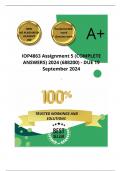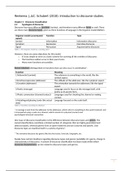Exam (elaborations)
IOP4863 Assignment 5 (COMPLETE ANSWERS) 2024 - DUE 19 September 2024 ; 100% TRUSTED Complete, trusted solutions and explanations.
- Institution
- University Of South Africa
IOP4863 Assignment 5 (COMPLETE ANSWERS) 2024 - DUE 19 September 2024 ; 100% TRUSTED Complete, trusted solutions and explanations.
[Show more]




